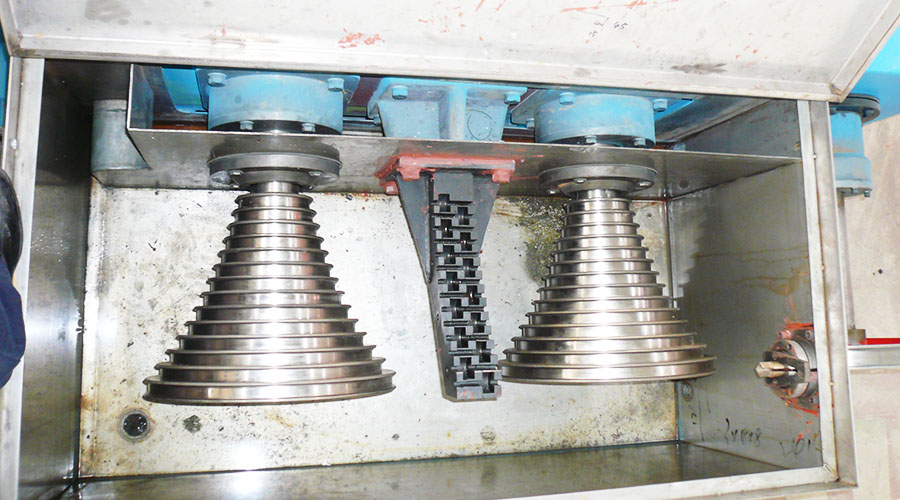The Transmission System and Installation Precautions of the Inverted Wire Drawing Machine
In the working process, the inverted wire drawing machine is specially designed for large-scale heavy-duty continuous non-twisting operations. It has dual functions of wire drawing and wire take-up.
It is suitable for drawing high, medium and low carbon steel wires, special-shaped steel wires, stainless steel wires, and thick non-ferrous metal wires.
It is especially suitable for the standard parts industry and shelf manufacturing industry. The maximum diameter of the incoming wire can reach 30mm, and the diameter of the drum can range from 600 to 1400mm.
Transmission system of inverted wire drawing machine
Powerful narrow V-jointed belt + standard reducer transmission (cycloidal pinwheel reducer, double-enveloping worm gear pair, planetary reducer, hard tooth surface reducer)
Speed regulation method: AC frequency conversion speed regulation
Take-up method: Active and adjustable, the car moves automatically
Suitable drawing materials: steel wire (high, medium, and low carbon steel wire, stainless steel wire, etc.); thick gauge non-ferrous metal wire. Especially suitable for the standard parts industry and shelf manufacturing industry.
The following four matters should be paid attention to when installing and using the inverted wire drawing machine:
(1) The installation foundation of the wire drawing machine must be very stable to avoid vibration;
(2) During installation, debugging should be done to make the tensile axis of the wire symmetrical to the center line of the die hole, so that the stress on the wire and the wire drawing die acts evenly;
(3) Frequent starts and stops should be avoided during the wire drawing process because the friction caused by the tensile stress at the start of drawing is much greater than the friction during normal drawing, which will inevitably increase the wear of the mold.
(4) In addition, the wire used for drawing must undergo pretreatment: surface pretreatment and heat treatment.
a. Surface pretreatment: Wires with dirty surfaces and a lot of impurities must be cleaned and dried before drawing.
For wires with a lot of oxide scale on the surface, they must be acid-thinned and dried before being drawn.
For wires with peeling, pits, heavy skin, etc. on the surface, they must be polished with a polisher before being drawn.
b. Heat treatment: For wires with excessive hardness or uneven hardness, the hardness must be reduced by annealing or tempering first, and the wire must maintain good hardness uniformity before drawing.





